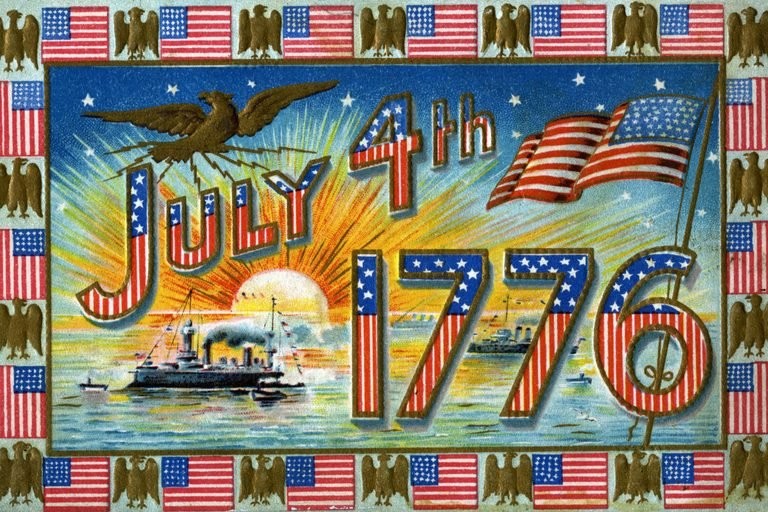- July 5, 2022
- Posted by: principlegroup
- Category: Uncategorized

Let freedom ring—and the fireworks bang!
Your complete guide to the 4th of July
What is the 4th of July, anyway? July 4th (also known as Independence Day) is an American holiday celebrated annually. Some bonus trivia: The holiday falls on a Monday this year, giving many Americans a three-day holiday weekend. While you’re thinking of fun 4th of July ideas for this year’s celebration (like planning a trip to see the best fireworks, shopping great sales, or sharing meaningful quotes on social media), you may wonder about the 4th of July’s history and its meaning to this nation. Why do we celebrate it each year? Well, don’t worry—we’re breaking it down for you with this 4th of July guide.
Read on to learn why we celebrate Independence Day, its history, and what you can do to celebrate this national holiday. Then, learn some interesting facts about the Declaration of Independence—and how it’s different from the Constitution.
Why do we celebrate the 4th of July?
You may wonder, “Why do we celebrate the 4th of July? What does it mean?” Well, this day is incredibly significant in American history, as it marks the day the United States officially became its own nation. The Declaration of Independence was adopted on July 4th, 1776—and thus, America was born. American citizens celebrate America’s birthday with festivals, parades, fireworks, barbecues, sparklers, and other festive activities.
Which country did we declare our independence from?
America declared its independence from Great Britain. In order to fully understand the significance of Independence Day and what happened in 1776, we need to go back in history a bit. Before America was its own country, it was comprised of 13 colonies established by Great Britain. The first colony was settled in Jamestown, Virginia, in 1607. European countries, especially Great Britain, continued to colonize America throughout the 17th century and a good portion of the 18th century. By 1775, an estimated 2.5 million settlers lived in the 13 colonies: New Hampshire, Massachusetts, Connecticut, Rhode Island, Delaware, New York, New Jersey, Pennsylvania, Maryland, Virginia, North Carolina, South Carolina, and Georgia.
What led the colonists to seek independence?
Tensions started brewing when Great Britain began passing legislation that gave it more control within the colonies, especially when it came to taxing the colonists. The Crown was in debt after the French and Indian War, so it started taxing the American colonies to increase revenue. The passage of legislation like the Stamp Act in March 1765, the Townshend Acts in June and July of 1767, and the Tea Act of 1773 forced colonists to pay more money to Great Britain—even though the colonies didn’t have a say in the Crown’s policies. This became known as taxation without representation and quickly became a heated pillar in the foundation of the American Revolution.
Events such as the Boston Massacre and the Boston Tea Party further escalated tensions between British occupiers and American colonists. Those tensions exploded in April 1775 when the Battles of Lexington and Concord broke out in Massachusetts as British forces attempted to confiscate weapons from the colonists. It was the first time colonial militias battled British troops, and thus, the American Revolutionary War began.
What really happened on July 4, 1776?
Fast-forward to a June 1776 Continental Congress meeting in Philadelphia. Here, Virginia statesman Richard Henry Lee proposed a motion for the colonies to declare independence from Britain. A committee was formed to draft an official independence document, which became known as the Declaration of Independence. On July 2, 1776, Lee’s motion for independence was approved. Two days later, on July 4, 1776, the Declaration of Independence was officially adopted—and America became a free nation. After declaring independence, America continued to fight in the Revolutionary War and officially defeated Great Britain in September 1783.
Interesting 4th of July facts every American should know
The history of the 4th of July is fascinating, but there are other interesting 4th of July facts every American should know. Here are six notable ones:
- Some colonists celebrated Independence Day during the summer of 1776 by putting on mock funerals for King George III of England—symbolizing the death of the Crown’s rule on America.
- The first annual commemoration of Independence Day happened on July 4, 1777, in Philadelphia.
- John Adams, a Founding Father and the second president of the United States, strongly believed Independence Day should be celebrated on July 2nd. He even refused to attend 4th of July events because he felt so strongly about July 2nd being the correct date.
- Adams and Thomas Jefferson, a fellow Founding Father, both died on July 4, 1826. James Monroe, another U.S. president, also died on July 4th, but he passed in 1831.
- Thomas Jefferson was the first president to celebrate Independence Day at the White House, in 1801. The celebration featured horse races, parades, food, and drinks—similar to the 4th of July celebrations we see today.
- Although the 4th of July has been celebrated each year since 1776, it didn’t become a federal holiday until 1870. And it didn’t become a paid holiday for federal employees until 1941.
